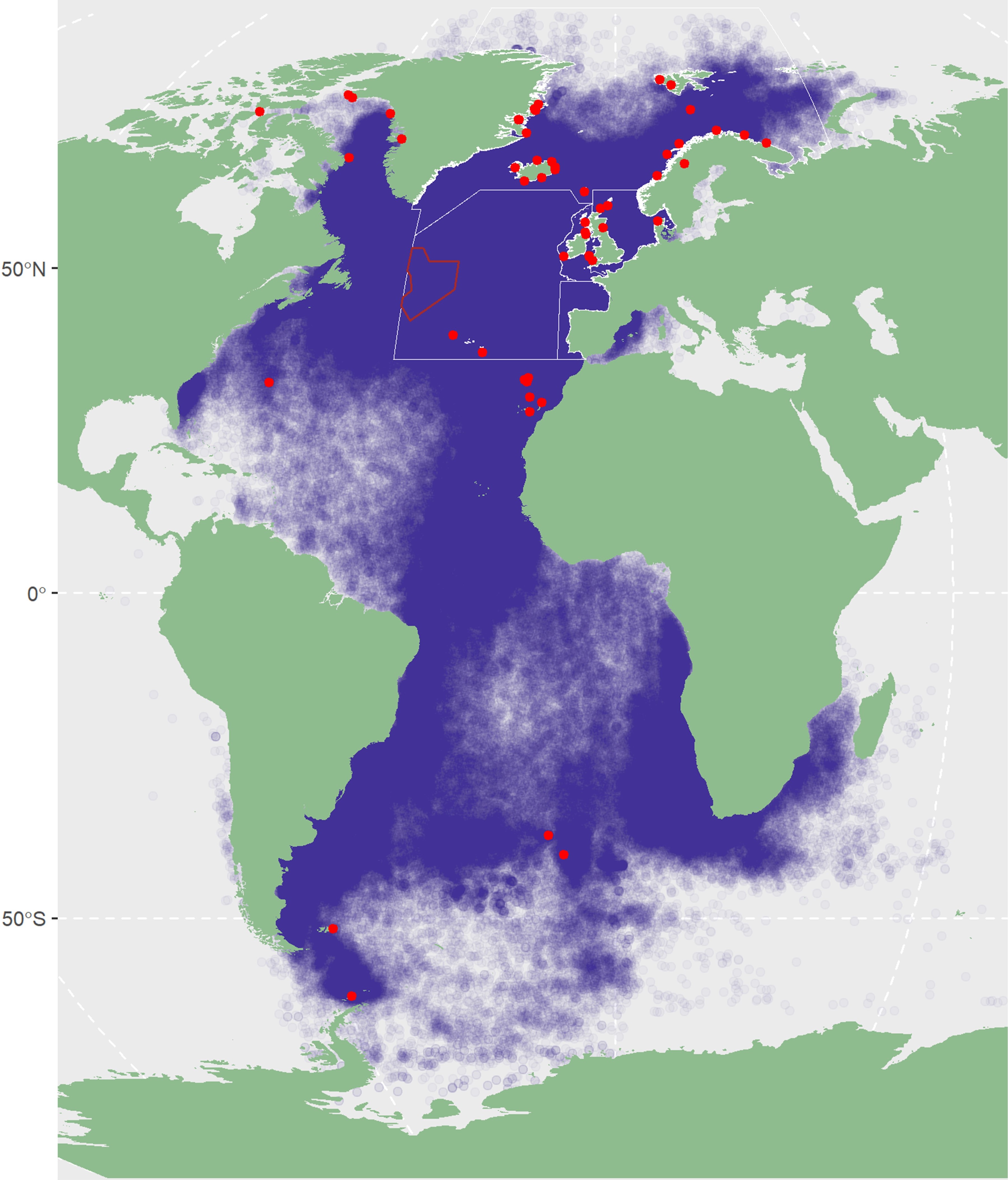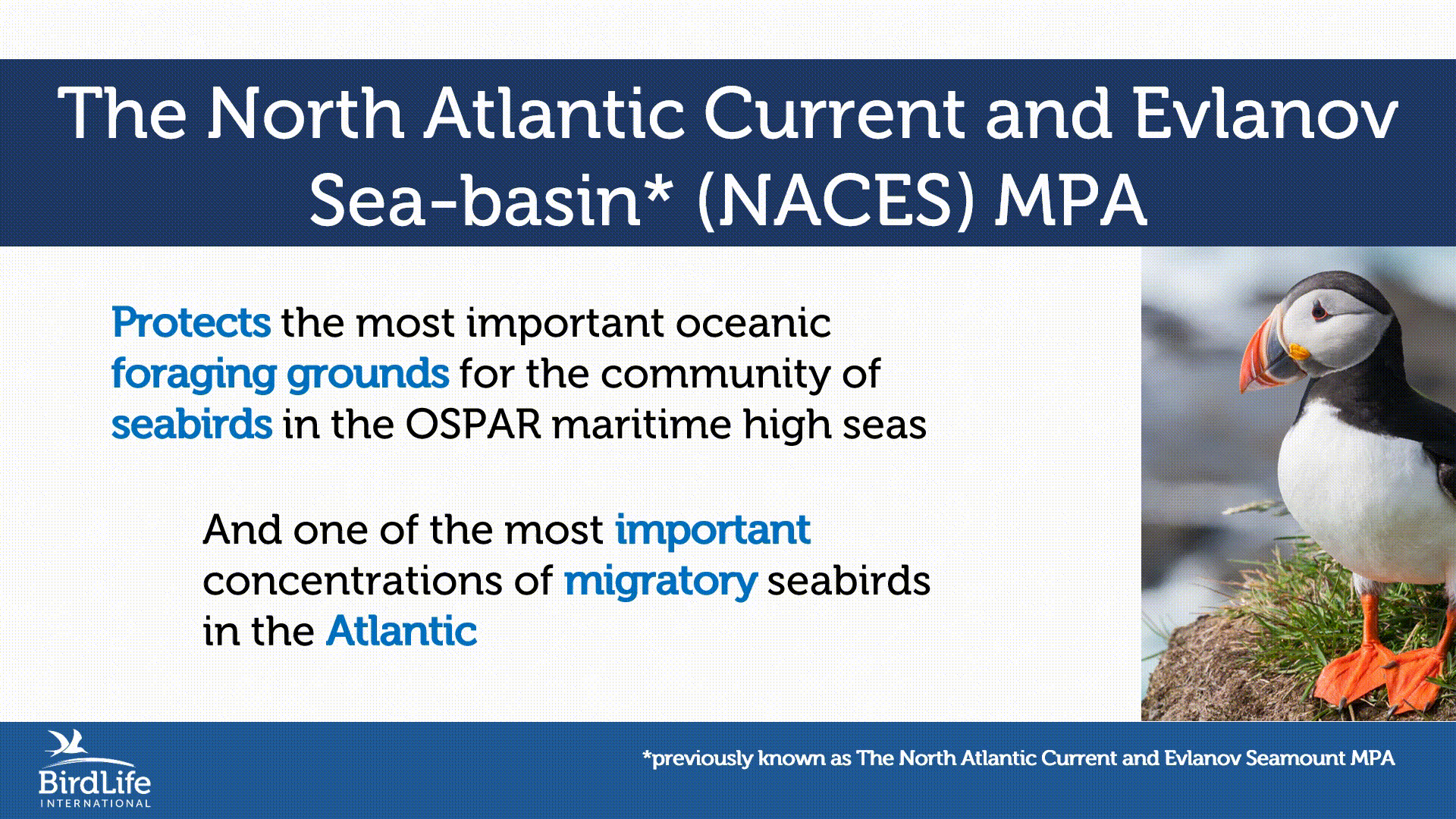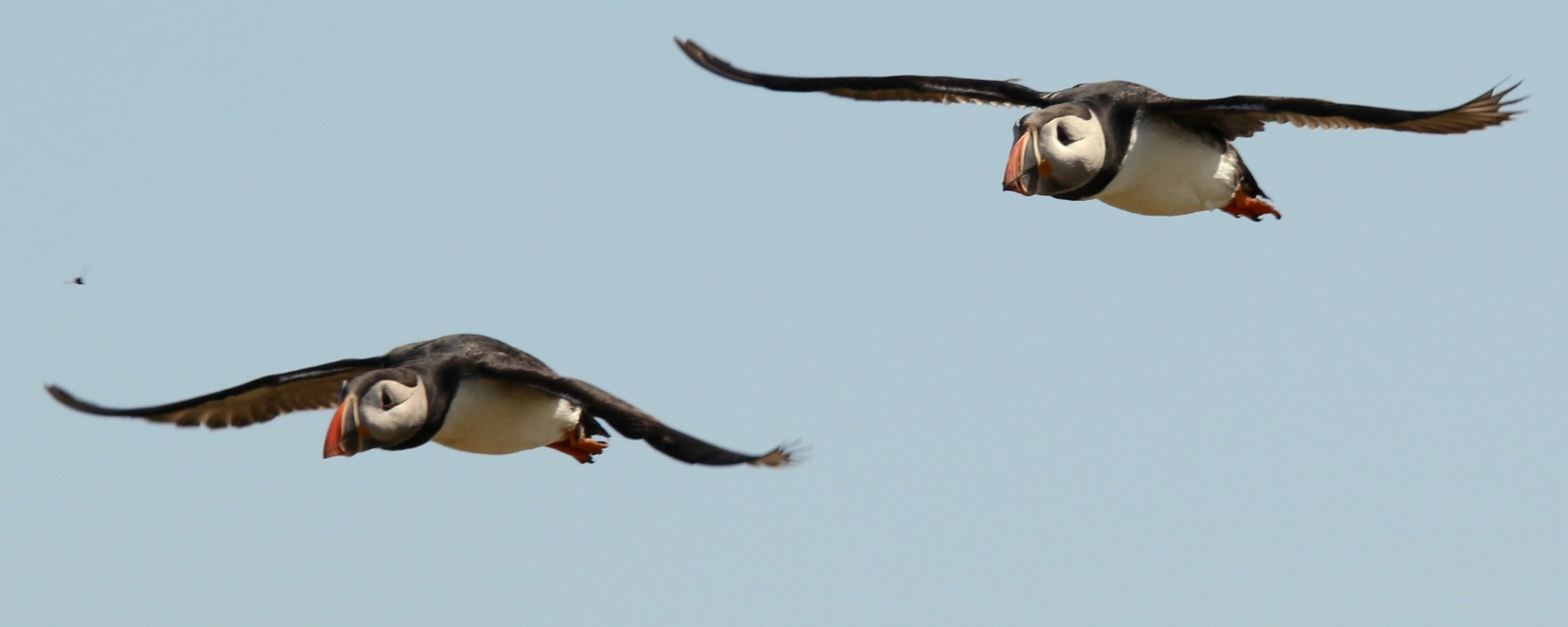A new Policy Direction by Davies and colleagues showcases a candidate high seas marine protected area (MPA) in the Northeast Atlantic, identified primarily from seabird tracking data, that is being taken forward under a regional process: the North Atlantic Current and Evlanov Seamount (NACES) MPA, under the OSPAR Commission.
The high seas are international waters beyond any country’s jurisdiction. Although out-of-sight, beyond 200 nautical miles from shore, they make up two thirds of the Earth’s ocean and play a critical role in maintaining life on Earth.
These vast waters are poorly protected (<1%) because there’s no overarching governance mechanism to guide holistic protection. However, a new legally binding instrument is being negotiated under the United Nations Convention on the Law of Sea on the conservation and sustainable use of marine biological diversity of areas beyond national jurisdiction: (known as the BBNJ Agreement) to address this. This forthcoming Agreement will provide a framework for the establishment of marine protected areas on the high seas and presents a huge opportunity to progress the protection of these vast and important waters.
But where should we protect?
Advances in tracking data (animal-borne devices collecting location data) are providing unparalleled insights into animal movement and behaviour, particularly for migratory marine species. Long-term tracking is now routine for many marine taxa, including fish, birds, mammals, and turtles, and can directly describe the biological importance of sites on the high seas. The utility of tracking data for identifying important areas at-sea has been well demonstrated.
The North Atlantic Current and Evlanov Sea-basin (NACES) MPA
The NACES MPA was designated under the OSPAR Commission on the 1st October 2021. It was identified from an analysis of seabird tracking data and protects one of the most important concentrations of migratory seabirds in the Atlantic.
The NACES MPA provides a unique case study to learn about the intricacies of translating tracking data into usable geospatial knowledge to inform conservation and policy. BirdLife International have supported the NACES MPA proposal for more than five years from conception to designation, and from this process we identified actionable opportunities to guide future application of tracking data for high seas area-based management (fully discussed in our paper), which will become possible under the BBNJ Agreement.

We found that the success of the proposal was facilitated by various factors, including: the focus on seabirds, which are typically high-profile species with lots of data and species of conservation concern in many countries. We also had strong support from the scientific community, and used well-established methods for identifying important areas from tracking data (e.g., Track2KBA) to create robust and easily interpretable, actionable knowledge.

BirdLife International championed the tracking data analysis and the MPA proposal, as an Observer to the OSPAR Convention, but also received strong support from Contracting Parties early on, which enabled the proposal to progress.
We also faced challenges on the way to designation, which included conveying the importance from future threats and the need to safeguard important areas before they’re highly threatened – this is particularly relevant for the high seas where emerging threats will likely have high impact. There is also a lack of scientific knowledge on vertical connectivity, which ultimately led to the seafloor not being included in the final designation (for now at least).
Overall, the imminent finalization of the BBNJ Agreement presents a unique conservation opportunity to apply tracking data to conservation outcomes, and to benefit the protection of migratory species and we’re looking forward to the next phase!
The full paper Tracking data and the conservation of the high seas: Opportunities and challenges is free to read in Journal of Applied Ecology
